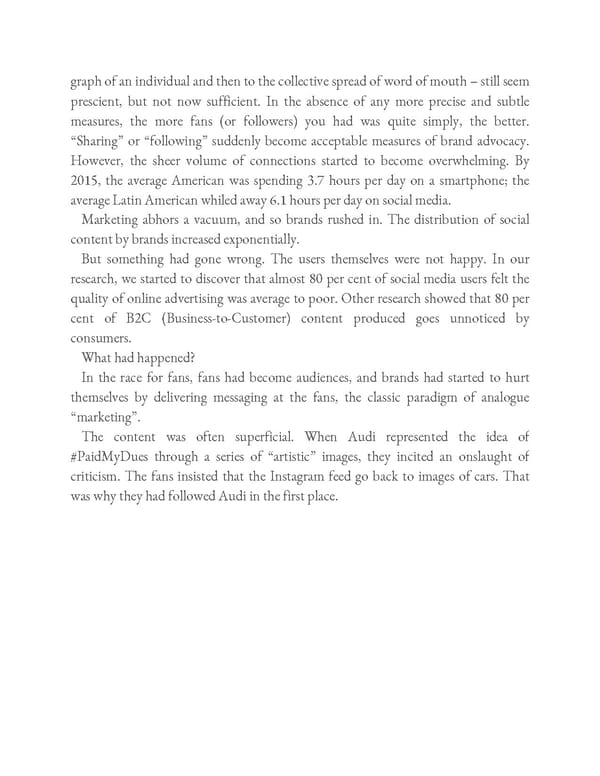graph of an individual and then to the collective spread of word of mouth – still seem prescient, but not now sufficient. In the absence of any more precise and subtle measures, the more fans (or followers) you had was quite simply, the better. “Sharing” or “following” suddenly become acceptable measures of brand advocacy. However, the sheer volume of connections started to become overwhelming. By 2015, the average American was spending 3.7 hours per day on a smartphone; the average Latin American whiled away 6.1 hours per day on social media. Marketing abhors a vacuum, and so brands rushed in. The distribution of social content by brands increased exponentially. But something had gone wrong. The users themselves were not happy. In our research, we started to discover that almost 80 per cent of social media users felt the quality of online advertising was average to poor. Other research showed that 80 per cent of B2C (Business-to-Customer) content produced goes unnoticed by consumers. What had happened? In the race for fans, fans had become audiences, and brands had started to hurt themselves by delivering messaging at the fans, the classic paradigm of analogue “marketing”. The content was often superficial. When Audi represented the idea of #PaidMyDues through a series of “artistic” images, they incited an onslaught of criticism. The fans insisted that the Instagram feed go back to images of cars. That was why they had followed Audi in the first place.
 Ogilvy on Advertising in the Digital Age Page 281 Page 283
Ogilvy on Advertising in the Digital Age Page 281 Page 283